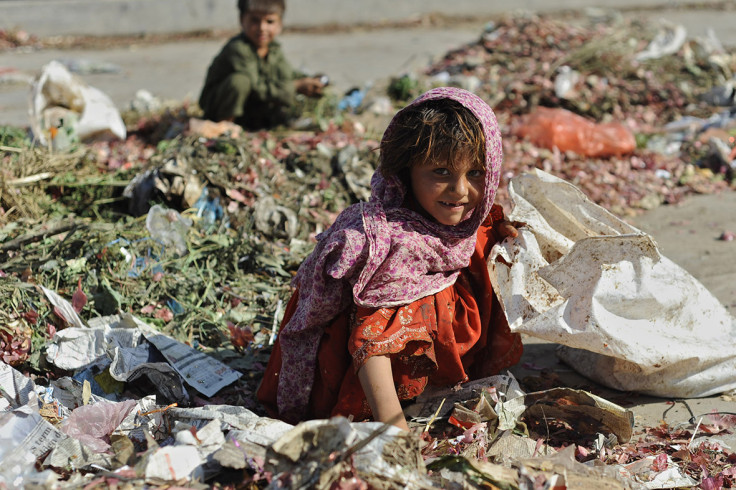World Day Against Child Labour: Top Five Countries with High Rates of Child Exploitation

Every day, millions of children worldwide are forced to work in inhumane conditions.
While the figure is declining, it is estimated that around 168 million children are still forced into child labour.
To highlight the problem, the International Labour Organisation (ILO) has launched the World Day against Child Labour, which is celebrated on 12 June.
IBTimes UK looks at some of the countries with the highest rates of child exploitation in economic activites.
According to ILO, Asia and the Pacific still have the largest numbers (almost 78 million or 9.3% of child population), but Sub-Saharan Africa continues to be the region with the highest incidence of child labour (59 million, over 21%).
There are 13 million (8.8%) children in child labour in Latin America and the Caribbean, while in the Middle East and North Africa there are 9.2 million (8.4%).
Due to the illegal nature of child labour, the official statistics might not reflect the real figures.
Pakistan
There are an estimated 12 million child workers in Pakistan.
Up to 1.7million children from the age of five are working in illegal brick factories in Pakistan . They work up to 14 hours a day with little food, no sanitation and little pay.
Children are engaged in the worst forms of child labour including bonded labour, primarily in dangerous forms of agriculture. Children also work in hazardous manufacturing activities in factories and are susceptible to industrial accidents.
In many work sectors, children are vulnerable to physical and sexual abuse.
Children's involvement in work in the rural areas is about 8 times greater than in the urban areas.
About 70% of the working children are unpaid family helpers.
Bangladesh
According to UNICEF, there are 7.4m working children aged 5-17 in Bangladesh.
Of these, 4.7 million are under 14.
Child labour in Bangladesh is most common in agriculture and in domestic service.
According to the Labour Law of Bangladesh 2006, the minimum legal age for employment is 14.
However, as 93% of child labourers work in small factories and workshops, on the street, in home-based businesses and domestic employment – the enforcement of labour laws is virtually impossible, UNICEF said.
Small boys from Bangladesh have been trafficked to the Middle East to work as camel racing jockeys. These children are often deliberately starved to prevent weight gain and can be subject to sexual and physical abuse.
India
According to the latest government figures, India is home to between 14 and 16.4 million child workers.
However, according to the US State Department the figures are much higher and are close to 55 million.
The Indian government enacted the Child Labour (Prohibition & Regulation) Act, 1986 and the Child Labour (Prohibition and Regulation) Rules in 1988.
According to a 2005 Government of India NSSO (National Sample Survey Org.), child labour incidence rates in India is highest among Muslim Indians, about 40% higher than Hindu Indians.
Child labour in the Dalit community, the lowest caste according to India's rigid caste system, is 2.8%.
Congo
About 4.7 million children aged 5–14 work in Congo.
In addition to copper mines, children work in artisanal mining of minerals and diamonds.
According to human rights lawyer Roger-Claude Liwanga, the work conditions in the artisanal mines are inhumane. Children use their bare hands and feet to dig, sift, wash and lift heavy loads of minerals.
Mali
Despite Mali legislation forbidding children under the age of 14 to be employed as workers, one out of three children below this age is forced to work.
There is an estimated 40,000 children working in Mali's artisanal gold mining sector.
Many of them start working as young as six years old.
Some travel to mining sites by themselves while most follow their family when they move near a mining site.
These children are subjected to some of the worst forms of child labour, leading to injury, exposure to toxic chemicals, and even death.
Children who work in mine are also as a high risk of child prostitution.
© Copyright IBTimes 2025. All rights reserved.






















